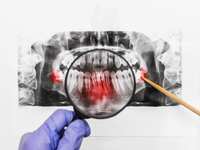Sleep Apnea – Don’t Be Fooled – It’s Sneaky

It’s a common assumption that sleep apnea is frequently associated with middle aged, overweight, thick-necked males who snore. While there is truth in this assumption, it’s important to know that many thin, non-snoring men and women have sleep apnea too. My patients will often say, “I sleep great!,” not knowing that they are suffering with sleep apnea as a root cause of some of their ailments, such as fatigue and high blood pressure.
Sleep apnea is a serious sleep disorder that most frequently remains undiagnosed, and left untreated, can lead to a greater risk for high blood pressure, cardiac arrhythmias, stroke, and erectile dysfunction. Other signs and symptoms that can accompany sleep apnea include morning headaches, unrefreshing sleep, poor sleep quality, needing to urinate in the night, and daytime fatigue and sleepiness.
Sleep apnea often remains undiagnosed. If you don’t fit the typical profile (middle aged, overweight, thick-necked, snorer, male), your doctor isn’t likely to send you for a sleep study.
With obstructive sleep apnea, the muscles in the throat and the jaw relax during sleep. As this happens, the tongue also falls back into the throat creating partial blockage of the airway, either fully or partially. This causes decreased airflow, causing oxygen levels in the blood to drop and carbon dioxide blood levels to increase. Eventually the oxygen-starved brain signals the body to wake up and clear the blockage so that oxygen levels improve once again. This cycle repeats itself throughout the night, sometimes hundreds of times, but at a subconscious level. This means that you don’t know this is happening and think you’re getting a great night’s sleep.
Aging and increased weight are risk factors. Interestingly, when we gain weight, our tongue increases in size, as does the tissue around the neck, and this narrows the airway. Aging also results in throat muscles becoming less stiff and more likely to narrow and collapse. Furthermore, airway architecture might be problematic for a much broader range of people.
- Family predispositions for certain anatomical features can put you at risk. Families may have narrower airways, enlarged adenoids or tonsils, or adjusting the tongue or jaw in a posterior position (pulling the tongue to the back of the mouth or pulling the lower jaw backward toward the neck).
- Certain ethnicities have tendencies for sleep apnea. The most common are African Americans, Hispanics, and Pacific Islanders, due to architectural features making the airway environment during sleep more susceptible to obstruction.
- Highly fit individuals can be more susceptible to sleep apnea. Due to a thicker and more muscular neck, the muscles and fat pads can compress and narrow the airway.
- Medical conditions such as hypothyroidism, growth hormone irregularities, food and environmental allergies, and other medical conditions causing congestion in the upper airways such as a deviated septum, and mold or yeast issues, are also causes of increased risk for sleep apnea.
And let’s not forget about CENTRAL sleep apnea. This is another explanation why thin, non-snoring people can have sleep apnea. Rather than an airway obstruction causing OBSTRUCTIVE sleep apnea, the other type of apnea called ‘central’ sleep apnea occurs due to the brain not signaling the need to breathe consistently while asleep. Risk factors for this include heart issues such as atrial fibrillation or congestive heart failure, and stroke or other brain injury, certain medications such as narcotic pain medications, age, and toxic burden in the body that’s affecting the brain and central nervous system.
Main takeaway: If you don’t fit the profile of a typical apnea patient, but exhibit symptoms such as morning headaches, unrefreshing sleep, poor sleep quality or daytime sleepiness, it is best to seek a medical evaluation and request a sleep study.
Breathe Well, Sleep Well, Be Well!
Resources:
https://mysleepdevice.com/thin-and-have-apnea/
Mayo clinic


















